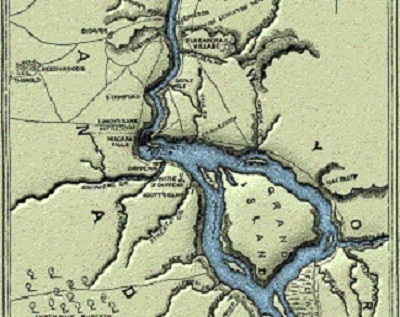The savagery of the fighting at Lundy’s Lane in July 1814 left an impression even on the experienced British soldiers who had fought in the Napoleonic Wars.
"The Americans charged to the very muzzles of our cannon…and bayonetted the artillerymen who were at their guns." a British veteran of the battle

Archives of Ontario
In July, 1814, American forces crossed the Niagara River near Fort Erie in the hopes of advancing into Upper Canada. Within earshot of western side of Niagara Falls, British and American forces clashed at a place called Lundy’s Lane. The contested ground was a small hill, which the British controlled with cannon. Unable to outflank the British, the Americans instead attempted a series of deadly frontal assaults. Attacking troops slogged uphill well into the evening of July 25. Throughout the night, fog and friction reigned as the opponents groped through a series of brutal and bloody engagements, sometimes fighting hand-to-hand. Both sides suffered heavy losses, from artillery shot as well as musket fire, as the battle surged back and forth. Around midnight, the Americans finally withdrew, leaving the exhausted British and Canadians holding the hill. The toll of the fighting at Lundy’s Lane was enormous for both sides. Nearly two hundred Americans and 100 British were killed. More than 1,000 soldiers on both sides were wounded or captured. One in five British soldiers at the battle was killed, wounded, or captured; for the Americans, one in three became a casualty. Four generals, including the American commander Winfield Scott, were among the wounded. Throughout the night of the battle, heaps of helpless and suffering wounded screamed and moaned for aid. One American surgeon recalled, “Such…carnage I never beheld…. Red coats, blue and grey…intermingled, in many places three deep…the carcasses of 60 or 70 horses disfigured the ground.” In the aftermath, as the bodies were gathered and burned in a massive funeral pyre, even battle-hardened veterans of the Napoleonic Wars were astonished by the carnage at Lundy’s Lane. One commented that he had “never witnessed such obstinate courage as [the Americans] shewed.” “They do not know…when they are beaten,” he recounted, “the Americans charged to the very muzzles of our cannon, and actually bayoneted the artillerymen who were at their guns.” It was an extraordinary, but ultimately futile, show of courage.
Last updated: March 6, 2015
